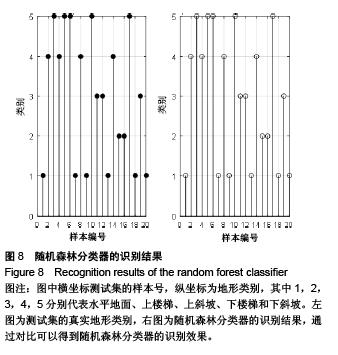| [1] 第六次人口普查委员会.2010年第六次全国人口普查主要数据公报(第1号)[R].北京:第六次人口普查委员会,2010.
[2] 中华人民共和国国家统计局.2006年第二次全国残疾人抽样调查主要数据公报(第二号)[R],2007.
[3] 谭冠政,吴立明.国内外人工腿(假肢)研究的进展及发展趋势[J].机器人,2001,23(1):91-96.
[4] 王人成,沈强,金德闻.假肢智能膝关节研究进展[J].中国康复医学杂志,2007,22(12):1093-1094.
[5] 王人成,金德闻.仿生智能假肢的研究与进展[J].中国医疗器械信息,2009,15(1):3-5.
[6] 金德闻,王人成.人工智能假肢[J].中国临床康复,2002,6(20): 2994-2995.
[7] 龚思远,杨鹏,刘启栋,等.智能下肢假肢传感器的应用[J].中国组织工程研究与临床康复,2010,14(17):3109-3112.
[8] 杨鹏,刘作军,耿艳利,等.智能下肢假肢关键技术研究进展[J].河北工业大学学报,2013,42(1):76-80.
[9] Sup F, Bohara A, Goldfarb M. Design and Control of a Powered Transfemoral Prosthesis. Int J Rob Res. 2008; 27(2):263-273.
[10] Au S, Berniker M, Herr H. Powered ankle-foot prosthesis to assist level-ground and stair-descent gaits. Neural Networks. 2008;21(4):654-666.
[11] Djuric, M. Automatic recognition of gait phases from accelerations of leg segments. 9th Symposium on Neural Network Applications in Electrical Engineering, 25-27 Sept. 2008:121-124.
[12] Sakagami Y, Watanabe R, Aoyama C, et al. The intelligent ASIMO: System overview and integration//Intelligent Robots and Systems, 2002. IEEE/RSJ International Conference on. IEEE. 2002;3:2478-2483.
[13] Chestnutt J, Lau M, Cheung G, et al. Footstep planning for the honda asimo humanoid.Robotics and Automation, 2005. ICRA 2005. Proceedings of the 2005 IEEE International Conference on. IEEE. 2005:629-634.
[14] Chestnutt J, Michel P, Kuffner J, et al. Locomotion among dynamic obstacles for the honda ASIMO. Intelligent Robots and Systems. 2007. IROS 2007. IEEE/RSJ International Conference on. IEEE. 2007:2572-2573.
[15] 宗光华,唐伯雁.日本拟人型两足步行机器人研发状况及我见[J].机器人,2002,24(6):564-570.
[16] 王岚,张今瑜,王劲松.人体步态相位检测实验研究[J].传感器与微系统,2006,25(5):42-44.
[17] 闫炳雷,谭冠军,曾庆冬,等.智能仿生人工腿CIP-ILeg性能仿真评估研究[J].计算机仿真,2006,(9):231-235.
[18] 谭冠政,何胜军,曾庆冬,等.CIP-Ⅰ智能仿生人工腿步速测量系统研究与设计[J].计算机测量与控制,2005,(11):1164-1166.
[19] 谭冠政,王越超.具有不完全微分的最优模糊PID控制器及其在智能人工腿中应用的仿真研究[J].控制理论与应用,2002,19(3): 462-466.
[20] 贺光辉,谭冠政,曾庆冬,等.智能仿生人工腿位置伺服控制系统的设计[J].计算机测量与控制,2007,(1):52-55.
[21] 王喜太,王强,张晓玉,等. 基于肌电传感器的下肢残肢康复训练模式识别的研究[J]. 中国康复理论与实践,2009,(1):90-92.
[22] 高云园,孟明,罗志增,等.利用多源运动信息的下肢假肢多模式多步态识别研究[J]. 传感技术学报,2011,(11):1574-1578.
[23] 高云园,佘青山,孟明,等.基于多源信息融合的膝上假肢步态识别方法[J].仪器仪表学报,2010,(12):2682-2688.
[24] 刘磊,杨鹏,刘作军.基于多源信息和粒子群优化算法的下肢运动模式识别[J].浙江大学学报(工学版),2015,(3):439-447.
[25] 刘磊,杨鹏,刘作军.基于多源信息和广义回归神经网络的下肢运动模式识别[J].机器人,2015,(3):310-317.
[26] Zhang F, Fang Z, Liu M, et al. Preliminary design of a terrain recognition system// Conference proceedings : annual International Conference of the IEEE Engineering in Medicine and Biology Society. IEEE Engineering in Medicine and Biology Society. Annual Conference. Conf Proc IEEE Eng Med Biol Soc. 2011:5452-5455.
[27] Ho TK. Random Decision Forests. In Proceedings of the 3rd International Conference on Document Analysis and Recognition. Montreal Canada. 1995;8:278-282.
[28] Breiman L. Random Forests. Machine Learning. 2001;45(1): 5-32.
[29] John Durkin,蔡竞峰.决策树技术及其当前研究方向[J].控制工程,2005,(1):15-21.
[30] Quinlan JR. Decision trees and decision-making. Syst Man Cybe IEEE Trans. 1990;20(2):339-346. |

.jpg)
.jpg)
.jpg)
.jpg)
.jpg)
.jpg)
.jpg)
.jpg)

.jpg)